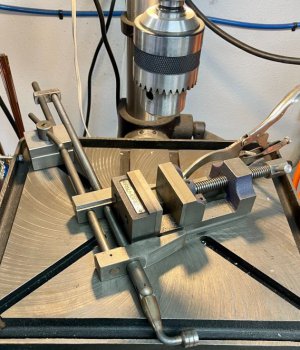- Joined
- Oct 17, 2018
- Messages
- 987
Thanks for the replies so far. You have confirmed what I thought: that floating it is just fine except when drilling larger holes with a big ol' DP.
I think the instructor is concerned about legal issues if some student gets hurt. At this point, I'm not able to say anything, even though the other machinists I've talked to say floating it is just fine, even in a production shop.
I think the instructor is concerned about legal issues if some student gets hurt. At this point, I'm not able to say anything, even though the other machinists I've talked to say floating it is just fine, even in a production shop.

